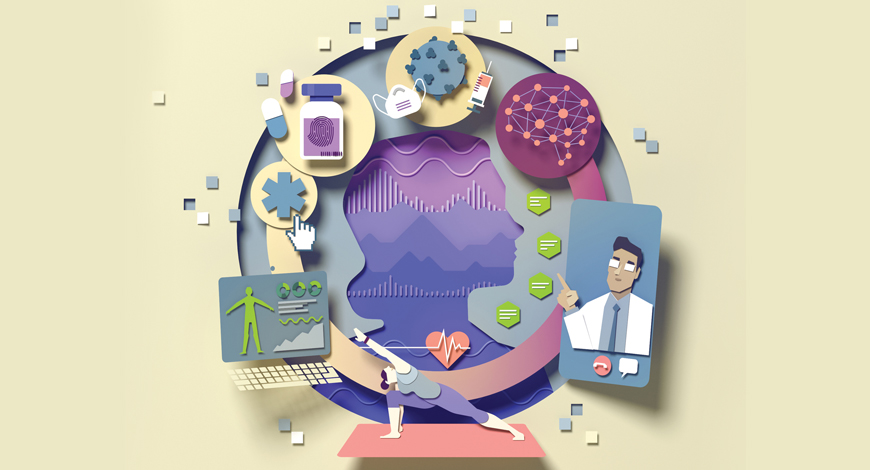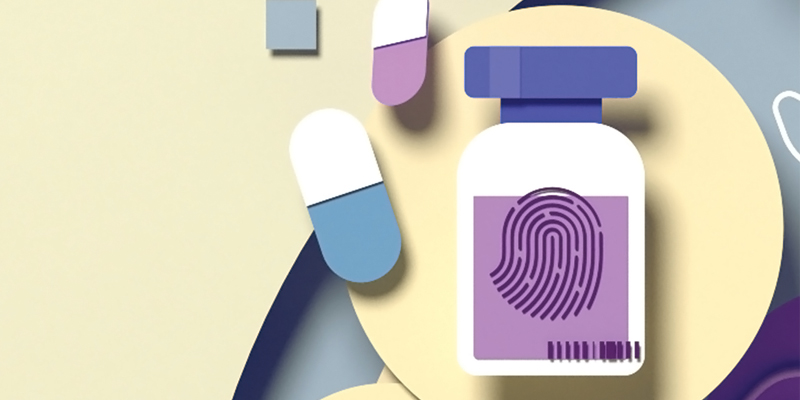MB Stories
2021 global healthcare outlook

Accelerating industry change.
The COVID-19 pandemic is placing enormous strain on the global healthcare sector’s workforce, infrastructure, and supply chain, and exposing social inequities in health and care. COVID-19 is also accelerating change across the ecosystem and forcing public and private health systems to adapt and innovate in a short period.
A number of foundational shifts are arising from and being exacerbated by COVID-19’s spread. Examples include consumers’ increasing involvement in healthcare decision-making; the rapid adoption of virtual health and other digital innovations; the push for interoperable data and data analytics use; and unprecedented public private collaborations in vaccine and therapeutics development. Amid these dynamics, governments, healthcare providers, payers, and other stakeholders around the globe are being challenged to quickly pivot, adapt, and innovate. Deloitte expect industry leaders to use the momentum ignited by organizational and ecosystem responses to COVID-19 to address six pressing sector issues in 2021.
How healthcare stakeholders analyze, understand, and respond to these issues will shape their ability to navigate from recovering to thriving in the post-pandemic new normal and advance their journey along the path to the Future of Health.
GLOBAL HEALTHCARE SECTOR ISSUES IN 2021
Consumers and the human experience
Consumers are driving—and accelerating—the pace of change in healthcare. Their needs and goals are driving innovation in health-related products, services, and tools. Their preferences are driving the development of digitally enabled, on-demand, and seamlessly connected clinician-patient interactions. Their demands are driving the transition to patient-centric care delivery across geographies and socioeconomic groups. And their expectations are driving industry stakeholders to elevate a transactional patient/customer healthcare encounter into a holistic human health experience.
COVID-19 has challenged consumers’ sense of well-being and accelerated their desire and determination to become more active, engaged, and empowered in managing their health. Consumers are learning about their health risks, communicating with their doctors in new and different ways, and changing their attitudes about data privacy. They want convenience, access, and transparency around treatment care and cost. Each of these factors has a significant influence on how consumers are feeling and interacting with their health system, as seen in findings from Deloitte’s recent global and US healthcare surveys and a consumer survey during the peak of the COVID-19 crisis.
Key takeaways. Every person’s health journey is different. Healthcare organizations should acknowledge this fact and tune their services to elevate each encounter into a personalized health experience.
Deploying new digital tools and services has the potential to increase consumer satisfaction, improve medication adherence, and help consumers track and monitor their health.
While consumers are more willing to share their data, healthcare organizations should ensure that the data serves consumers’ needs through adequate interoperability between the organizations that own or store the data. To maintain or even re-earn the trust of consumers, organizations should demonstrate reliability, transparency, and most importantly, a sense of empathy in how they operate.
Care model innovation
Healthcare organizations around the world are struggling to solve long-present challenges of affordability, access, quality, and efficiency. However, existing care models can impede their efforts to adapt and evolve for the future. Care model innovation can help deliver a more effective and satisfying patient and clinician experience and bend the cost curve.
Key takeaways. The long-held assumption that healthcare is sick care for the physical body is expanding to include consumers’ mind, spirit, and body. Focus is shifting from healthcare to health and well-being, and providers should integrate this shift into the design of their service offerings and delivery channels/locations.
More than ever, consumers will expect care to be available when and how it is most convenient and safe for them. This includes virtual care, at-home prescription delivery, remote monitoring, digital diagnostics and decision support, and self-service applications for education, behavior modification, and social support.
Organizations must be willing to invest in optimizing or replacing foundational structures, technologies, and workforce processes, and consider emerging financial models such as value-based care, healthcare services, and capitated payments that put patient needs and cost-management concerns front and center.
Digital transformation and interoperable data
Digital transformation can help individual healthcare organizations and the wider health ecosystem improve ways of working, expand access to services, and deliver a more effective patient and clinician experience. Three technologies are playing increasingly pivotal roles around the globe—cloud computing, Artificial Intelligence (AI), and virtual care delivery.

Key takeaways.Healthcare organizations are transitioning to health IT systems powered by cloud and data and analytics tools to enable real-time, smart digital health. They are using interoperable data and platforms supported by deep learning capabilities, “always on” biosensors, and behavioral research to shape consumer beliefs and actions. They are also applying virtual care, AI, and other technologies to personalize medicine, enable real-time care interventions, and provide behavioral nudges.
While consumers are keen on future virtual visits, they are still not completely satisfied with their interactions with the doctor or clinician. Training personnel in building virtual interpersonal relationships can be a major step toward improving consumers’ virtual visit experience.
Radical data interoperability is a required foundational capability to enable healthcare providers, insurers, and other stakeholders to deliver patient-facing programs and associated technologies. When implemented correctly, it can help greatly improve care delivery and patient empowerment and provide a solid return on investment (ROI).
Socio-economic shifts
An increasing demographic of underserved consumers and communities is leading to health inequities—systematic disparities in the opportunities groups have to achieve optimal health, leading to unfair and avoidable differences in health outcomes. What can healthcare stakeholders do to make health more equitable? Today’s socio-economic, mental, and behavioral health crises have made it clear that players across the healthcare landscape need to innovate to better serve the whole-health needs of people across the world.
Key takeaways. Low-income families and people of color tend to be less healthy than other members of the population and are more likely to have more than one chronic condition. This impacts life expectancy, quality of life, even earning potential. Intervening earlier and creating more points deep into communities that enable better access to traditional care as well as food, educational resources, and connections to other social services agencies can help improve the drivers of health.
There is an enormous need for governments and organizations across the world to address mental and behavioral health issues. Unfortunately, industry stakeholders face considerable challenges in addressing the large scope of the behavioral health crisis.
Combining the power of disruptive technologies with ecosystems to create change and developing a framework of actions and commitments can empower individuals to proactively manage their health and well-being and foster a sense of community and belonging.

Collaboration
One legacy of the pandemic is likely to be a renewed focus on collaboration across the health ecosystem. Traditional boundaries have become more porous or even erased, creating opportunities for new healthcare behaviors, new business and funding models, and more effective stakeholder collaborations, leading to novel combinations of products and services from incumbents and new entrants.
Key takeaways. COVID-19 ignited unprecedented collaboration across organizations, industries, academia, and governments and irrefutably demonstrated the value of partnering to deliver new solutions and improved outcomes.
Interesting alliances are expected to arise between healthcare incumbents and technology giants, each bringing distinct strengths to the arrangement. Many of these are based on creating value by combining and analyzing datasets and converting them into interventions that save costs or improve quality and the user experience.
Future of work and talent
Addressing near-term workforce challenges arising from COVID-19—in particular, safeguarding frontline staff’s safety and well-being—while also building future workforce adaptability and resilience will require data-driven, human-centric solutions that allow organizations to move quickly to support evolving employee needs.
Key takeaways. Cloud technologies, remote-work platforms, shared services, and AI can enable organizations to extend remote work arrangements they established during the pandemic well into the future.
Data on how individuals and teams interact and collaborate can help organizations look beyond the traditional organizational chart to strengthen and expand networks and collaborations, nurture new ideas, and help foster a culture of inclusion and belonging.
ACTIONS HEALTHCARE LEADERS SHOULD CONSIDER FOR 2021
How can our organization tune our services to meet consumers’ immediate healthcare needs and goals andsupport their journey to the Future of Health?
The healthcare consumer of the future is arriving faster than anticipated, fueled by the COVID-19 pandemic. Yet every person’s health journey is different. Healthcare organizations should acknowledge this fact and tune their services to elevate each encounter into a personalized health experience.
How can pandemic-related disruptions inform and guide our care model innovation efforts?
The global healthcare sector’s problems of escalating demand, budget pressures, and caregiver shortages existed long before COVID-19. However, the current crisis has disrupted both the nature and the timeline of industry transformation. As organizations rethink the types of services provided and the locations where they are performed, they must also rethink the current parameters of care delivery models and be ready to transform at the enterprise level not just optimize select pieces of the ecosystem within existing constructs.
What actions can help our organization accelerate digital transformation and enable radically interoperable data?
Digital transformation can help individual healthcare organizations and the wider public and private health ecosystem improve ways of working, expand access to services, and deliver a more effective patient and clinician experience.
How can we better address the socioeconomic, mental well-being, and behavioral health issues that impact health access and equity?
Today’s socioeconomic, mental, and behavioral health crises have made it clear that players across the healthcare landscape—including but not limited to both private and public insurers, care providers, employers, and government policymakers—need to innovate to better serve the whole-health needs of people across the world.
Global healthcare sector stakeholders are likely to face considerable challenges in 2021; first and foremost, ramping up production and coordinating the distribution of COVID-19 vaccines. Yet, even as they join forces against the pandemic’s immediate crises, organizations also need to understand, analyze, and respond to the trends that are propelling them toward the future of health. For 2021, these include consumers and the human experience, care model innovation, digital transformation and interoperable data, socioeconomic shifts, collaboration, and the future of work and talent.
The article is based on 2021 Global Health Care Outlook by Deloitte.












